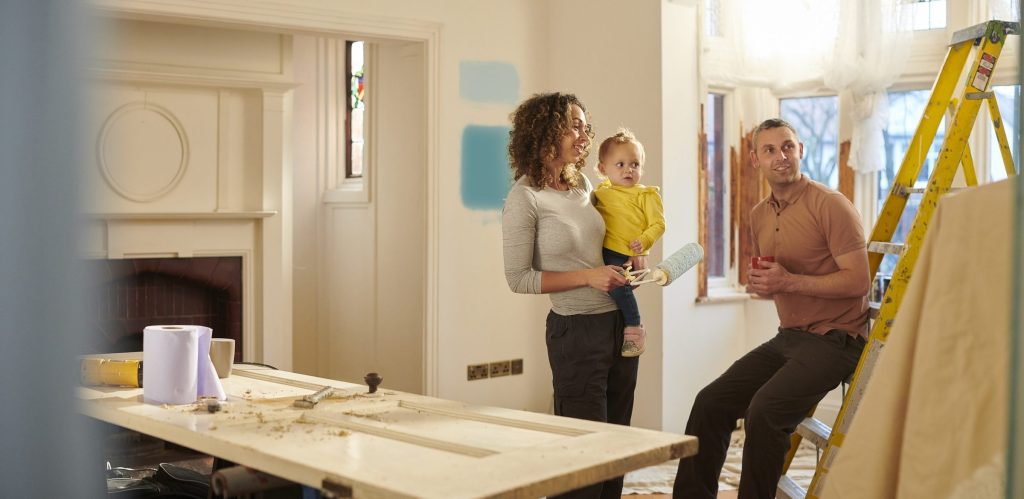Planning a home renovation can be both exciting and daunting. To bring your vision to life, it’s essential to start by understanding how to save for a home renovation effectively. This process involves not just putting money aside but also exploring various financing strategies.
By taking a structured approach, you can transform your home without overwhelming your finances. With the right savings and financing plan, you’ll be ready to tackle any renovation project. Whether you’re looking to update a single room or your entire house, having a financial plan in place will ensure that your home improvement dreams don’t turn into a financial nightmare.
In this guide, we’ll explore practical tips and strategies to help you save up for a successful renovation project. From setting a clear budget to exploring different financing options, you’ll find everything you need to achieve your home makeover goals.
Creating a budget for your renovation

Before diving into the renovation process, it’s crucial to establish a comprehensive budget. This serves as your roadmap, outlining how much you anticipate spending and helping you avoid financial pitfalls. A well-defined budget will set realistic expectations and guide you in making informed decisions throughout the renovation journey.
Start by estimating the costs associated with your project. This includes materials, labor, and any additional expenses such as permits or design fees. Research the market to get a sense of the average costs for similar projects in your area, and don’t forget to include a contingency fund for unexpected expenses.
Identifying essential and non-essential expenses
Distinguishing between must-haves and nice-to-haves is crucial in the budgeting process. It’s easy to get carried away with luxury upgrades, but focusing on essential improvements ensures that you address critical issues and get the most value from your renovation. Make a list of essential items that need immediate attention.
These are elements that impact the safety, functionality, or structural integrity of your home, such as a leaky roof or outdated electrical systems. Addressing these first will prevent more costly repairs down the line.
Consider placing non-essential items in a secondary list that you can tackle as funds become available. If your budget allows later, you can add these enhancements without jeopardizing the primary goals of your home makeover.
Setting a realistic savings goal
To effectively save for your renovation project, establish a clear savings target. This involves calculating the total cost of your renovation, minus any existing funds you can allocate, to determine what you need to save.
Once you’ve set your target, create a timeline for reaching your goal. Consider your monthly income and expenses, and determine how much you can reasonably set aside each month. Automate transfers to a dedicated savings account to ensure you’re consistently contributing towards your renovation fund.
Regularly review your progress to stay motivated and make adjustments as needed. If you find you’re falling short, consider increasing your savings through additional income streams, such as freelance work or selling unused items.
Exploring financing options
Sometimes, saving alone isn’t enough to cover major renovation costs. Fortunately, various financing options can provide additional resources to realize your home improvement ambitions. Understanding these avenues will equip you with the knowledge to choose the best financial path for your renovation. Common financing tools include personal loans, home equity loans, and lines of credit.
Each comes with its own set of pros and cons, so it’s important to evaluate these options based on your financial situation and long-term goals. Consult with financial advisors to help you navigate the complexities of these options. They can provide insight into interest rates, repayment terms, and tax implications, ensuring you select the most suitable financing strategy.
Considering home equity loans
A home equity loan is a popular option for homeowners with significant equity built up in their property. It allows you to borrow against the value of your home, usually at lower interest rates compared to personal loans or credit cards. This type of loan provides a lump sum of money that can be used for large-scale renovation projects, with a fixed repayment schedule and interest rate.
It’s ideal for borrowers who prefer predictable monthly payments and have a clear idea of their budget needs. Be mindful of potential risks, as defaulting on a home equity loan can lead to foreclosure. Assess your financial stability before committing, ensuring you’re comfortable with the long-term repayment commitments involved.
Exploring personal loan alternatives
For those without sufficient home equity or preferring unsecured options, personal loans can be an attractive alternative. These loans are generally easier to obtain and don’t require collateral, though they may come with higher interest rates. Personal loans are particularly useful for smaller projects or when you need quick access to cash.
They offer flexible terms and can be tailored to fit your financial needs and repayment capacity. When opting for a personal loan, shop around to compare offers from different lenders. Consider interest rates, terms, and any additional fees to ensure you’re getting the best deal to meet your renovation needs.
